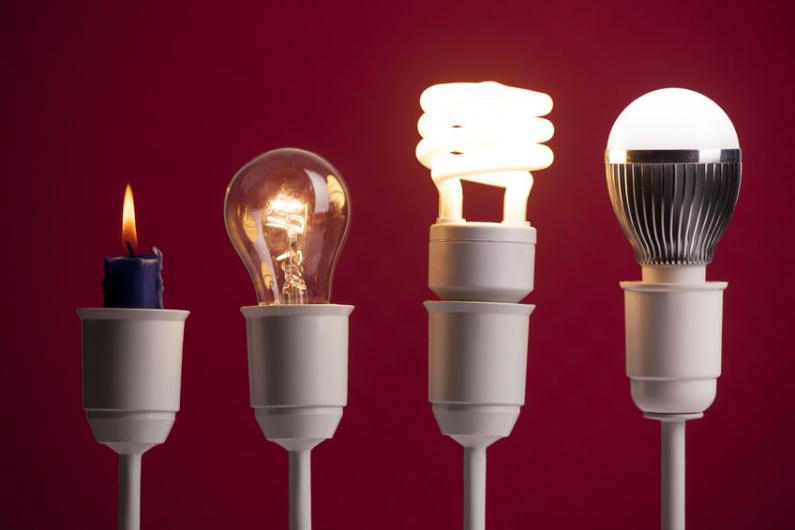
LED light bulbs are known to most of us as being the ultra efficient and energy saving alternative to the old-fashioned incandescent style of bulb. Now, as a term, LED is less inspiring and magical sounding than 'incandescent' (it actually means 'light emitting diode') - but there are a few spellbinding things you should know about the LED - and why it continues to grow in popularity.
1. LED lights work better when its colder
For areas that are colder, or just during the winter months, current LED bulbs respond straightaway and are instantly brighter and effective compared to their older counterparts or indeed bulbs that precede the LED. They are ideal for commercial use, specially storage areas, that might not be heated at all. Do you remember the time delay when switching on LEDS when they were first introduced? It's a legacy from a few years ago that has since been superseded by far more superior technology.
2. LED light bulbs can affect your sleep and concentration levels
LED is as close to natural daylight as possible so it can be instrumental in keeping you alert and productive - ideal for the office! This applies especially to cooler tones so it's not so good if you are creating a cosy, relaxing atmosphere where you would choose a warm white or other warmer tone. You can even set your lighting to change colour subtly according to the time of day - as used in many organisations including hospitals where the lights are rarely off completely.
3. Blue LED lights can keep your food fresher!
One of the lesser known properties of the blue hued LED is its significant bacteria-killing potential. This makes them the perfect choice for your fridge as they work hard to keep your food fresher for much longer. If that isn't magic, we don't know what is!
4. LEDs can be used to disinfect hospitals
As a natural development from point 3, LEDs on the ultraviolet spectrum can kill germs in rooms, without the usual harmful properties found in intense UV light. These are valuable in areas where infection or contamination might be prevalent such as surgeries, food production and laboratories.
5. LEDs for fresher skin...
For sufferers of spots and acne, LED light therapy, combining red and blue tones, is used by dermatologists with excellent results. The blue light gets deep into the skin's pores and fights the bacteria that cause spots, while red light can reduce inflammation. It's a winning combination and has seen a surge of 'at home' products becoming available to allow people to treat their own skin at home and not just through traditional medical routes.
The skin uses the light as a source of energy to fuel the repair and rejuvenation of damaged cells, or, in the case of treating acne, kill bacteria. The energy stimulates the production of collagen and elastin, boosts circulation and accelerates tissue repair. [Source: Elle.com]
6. Blue lighting can affect your mood and actions
The calming effect of blue LEDs is well documented and is often used to positive effect in crowd control and mood setting. It has been trialled in its association with anti-social behaviour. Blue lighting is being introduced at Gatwick railway station in a bid to help minimise incidents.
Terry Denyer, senior asset engineer for Network Rail, says early indications from the Gatwick project are good. ‘Thus far we have had no reported suicide-related incidents at the station since the lights were turned on and we have received anecdotal evidence only from station management that secondary effects such as vandalism, littering and staff abuse may well have fallen.’ [Source: Lux Review]
7. LEDs can help plants to grow quicker and better
The LED doesn't emit much heat so they are highly effective in plant production. Creating an environment of the perfect light, nutrients and temperature can even negate the need for soil which means plants can be grown in a number of previously inhospitable places such as space and the London Underground!
8. LEDs could be the future of data transfer thanks to Li-Fi
Li-Fi could become the way forward in terms of powering your connections to the internet. It is currently under development as an alternative to Wi-Fi. Wi-Fi uses radio waves and Li-Fi will use LED bulbs as a router.
Another big advantage of LiFi is that the usage of light allows LiFi connections to occur almost instantaneously because light travels at extremely fast speeds. This results in faster transmission of data and faster internet connections – about 100 times faster than speeds achievable by WiFi. [Source: Lifi.co]
References:
which.co.uk 2019
Lifi.co
Elle.com
luxreview.com
